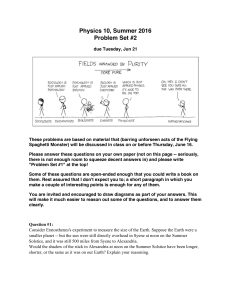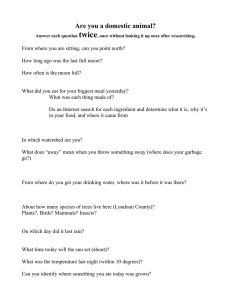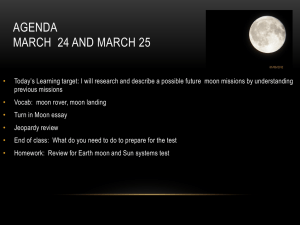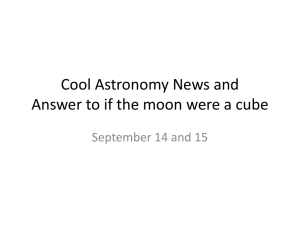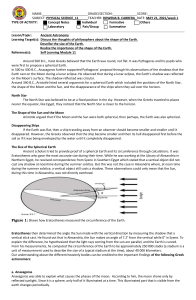Worksheet Name _______________________ A Short History of Scientific Ideas to 1900
advertisement
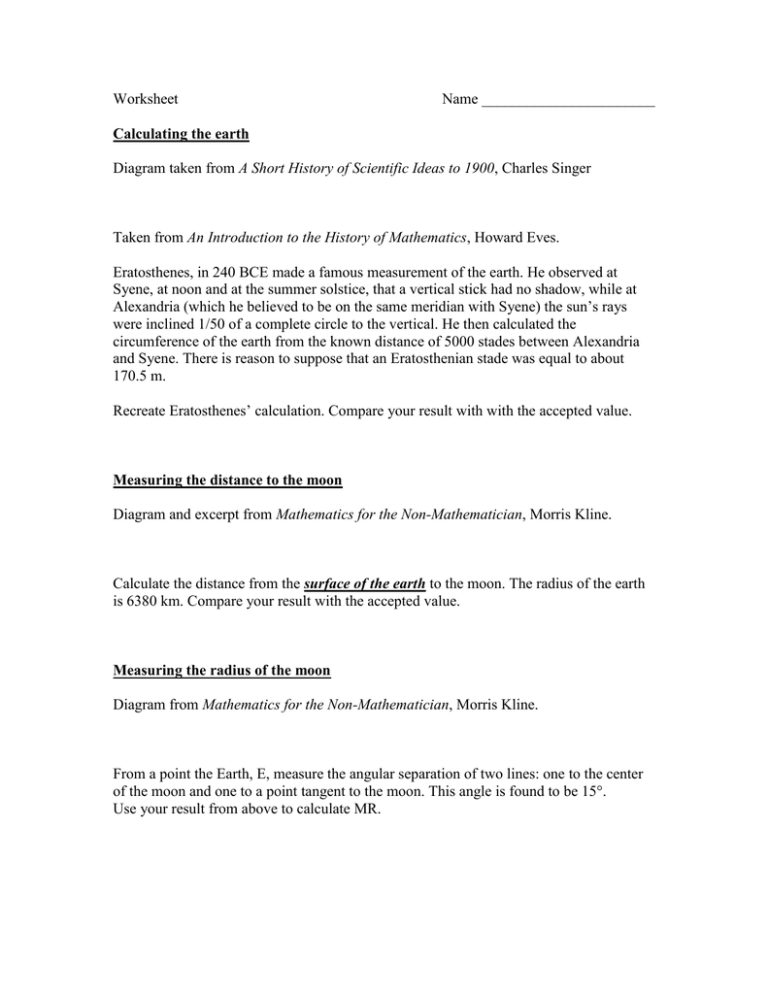
Worksheet Name _______________________ Calculating the earth Diagram taken from A Short History of Scientific Ideas to 1900, Charles Singer Taken from An Introduction to the History of Mathematics, Howard Eves. Eratosthenes, in 240 BCE made a famous measurement of the earth. He observed at Syene, at noon and at the summer solstice, that a vertical stick had no shadow, while at Alexandria (which he believed to be on the same meridian with Syene) the sun’s rays were inclined 1/50 of a complete circle to the vertical. He then calculated the circumference of the earth from the known distance of 5000 stades between Alexandria and Syene. There is reason to suppose that an Eratosthenian stade was equal to about 170.5 m. Recreate Eratosthenes’ calculation. Compare your result with with the accepted value. Measuring the distance to the moon Diagram and excerpt from Mathematics for the Non-Mathematician, Morris Kline. Calculate the distance from the surface of the earth to the moon. The radius of the earth is 6380 km. Compare your result with the accepted value. Measuring the radius of the moon Diagram from Mathematics for the Non-Mathematician, Morris Kline. From a point the Earth, E, measure the angular separation of two lines: one to the center of the moon and one to a point tangent to the moon. This angle is found to be 15°. Use your result from above to calculate MR.
